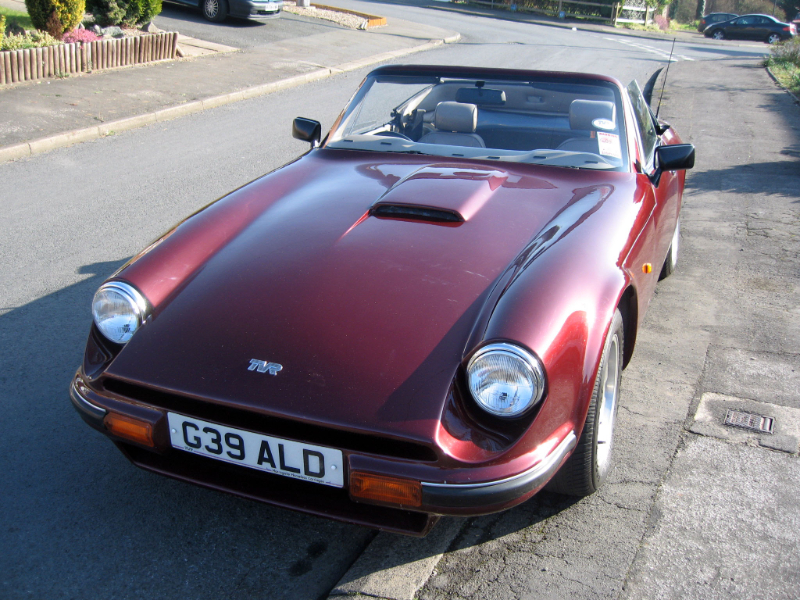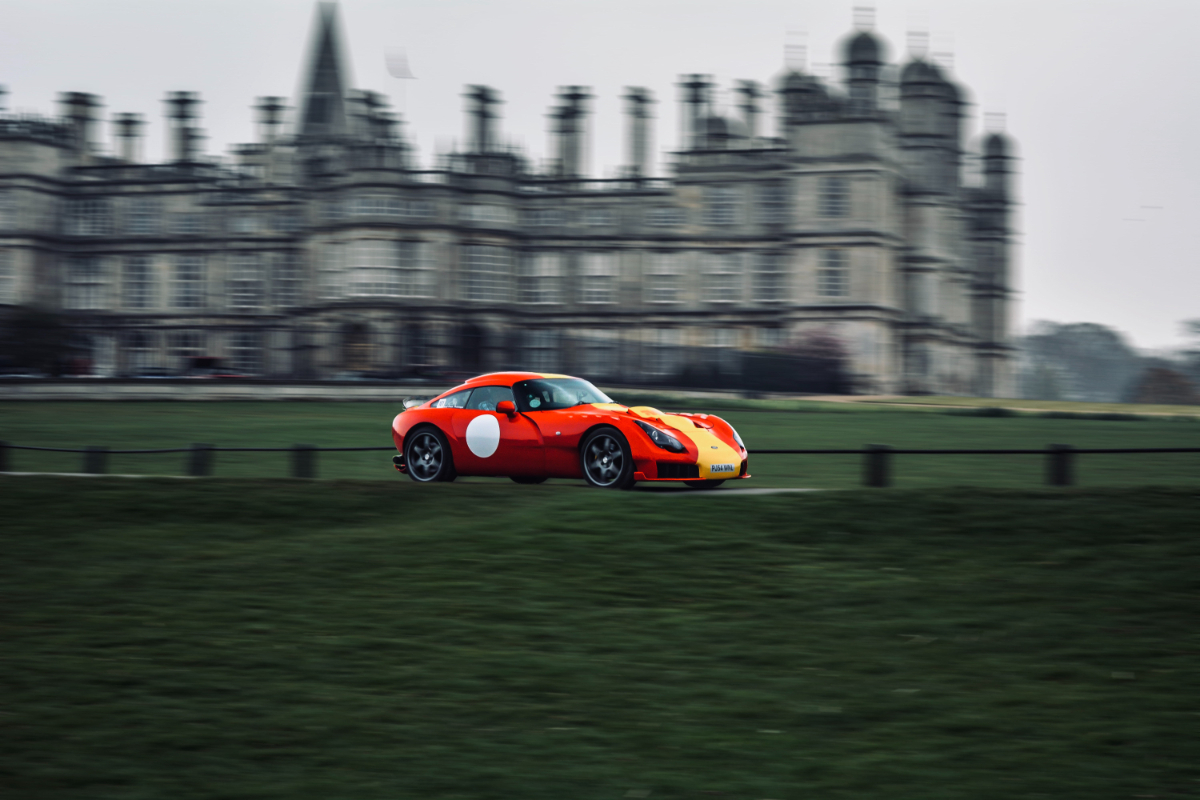What is the history of TVR? Find out more about how TVR became the world famous car brand as it is known today. We look at the origins and achievements of the TVR car company.
When Was TVR Founded?
The British company TVR had its beginnings in 1947 when Trevor Wilkinson established "Trevcar Motors" in Bristol Avenue, Blackpool, Lancashire. Two years later, in 1949, Trevcar Motors produced its first TVR vehicle. Using a Ford 100E engine, tubular chassis, manual transmission and Morris 8 components, Trevor added his own modifications and personal touches.
Unfortunately, this first example of TVR manufacturing history no longer exists. Luckily, Trevor's second creation, the front-engined, rear-wheel-drive TVR no. 2, still exists and is owned by a lucky member of the TVR Car Club. Soon after this model rolled off the production line, Mr Wilkinson decided it would be far more cost-effective to construct his car bodies from fibreglass. The first of these appeared in 1953, with the body of an RGS Atalanta fixed to a TVR chassis.
IS BUYING A USED TVR A GOOD INVESTMENT
It wasn't until 1958 that TVR produced its first in-house production car, complete with its own fibreglass body and semi-spaceframe chassis. This was the first model built solely by TVR. The car named the TVR Grantura was the first of many iconic sports cars in the history of TVR.
The manufacturer has had a spotted past, with many rough patches, but they have always been at the forefront of British car manufacturing and have produced some iconic sports cars, including:
TVR 3000S
1978

TVR Sagaris
2005
TVR 400
1988
TVR 3000M
1972

TVR Vixen
1967

TVR Griffith
1991
TVR V8S
1986
TVR Cerbera
1996

TVR Tamora
2002

TVR 450SE
1986
TVR 2500
1988
TVR Chimera
1992

TVR S Series
1986

TVR Typhon
2000
TVR Tasmin
1980
TVR Tuscan
1999

The Wilkinson era
After serving his apprenticeship at a local garage, founder Trevor Wilkinson bought a former wheelwright's workshop in 1946, which would become the base of operations for TVR during the Wilkinson era. At first, Trevcar Motors was a general engineering business helping local motorists and others requiring TVR automotive services. He also specialised in refreshing people's vehicles, whether domestic cars or commercial trucks.
In 1947, Trevor was joined by Jack Pickard, a local motoring enthusiast, at which point the business was renamed "TVR", removing some of the letters from Trevor's name. While the name changed, TVRs work remained relatively the same, assisting local Blackpool residents with their mechanical or engineering needs.
It was not until 1953 that TVR unveiled its very first car. Wilkinson and Pickard designed the new chassis themselves, with the idea of fitting it with components such as the gearbox and engine from an Austin A40. Using the previously mentioned RGS Atalanta body, TVR released this car as a kit form model and named it the "TVR Sports Saloon". This was TVR's first car to be released with a brochure detailing all of its features, from weight to 0-60.
It was also the first to have the TVR badge, designed by an art student and friend of Trevor Wilkinson, John Cookson.
The Wheeler era
From the start, TVR relied on naturally aspirated engines from manufacturers such as Ford, MG and Coventry Climax. But when Peter Wheeler, a chemical engineer producing products for the oil industry and, more importantly, TVR fan, came into entire ownership of the car company, he decided on an engine that would become a firm favourite amongst TVR enthusiasts during the 1980s and beyond.
This new engine was the Rover V8, and it powered all the new models of the 80s in various forms and sizes. The first V8 was used in the TVR 350i, a 3.5-litre configuration that produced 200 bhp. At the other end of the scale, we have the 5.0-litre V8 that debuted in the TVR Griffith prototype before it entered full-time production. This form produced upwards of 300 bhp and would be used in some of TVR's most famous sports cars, such as the Griffith and the Chimaera.
In the mid-90s, under Wheeler's leadership, TVR Engineering Ltd decided to start manufacturing their own engines in-house. This became known as the AJP8, named for the three men who designed and built it - Al Melling, John Ravenscroft and Peter Wheeler - hence "AJP". Initially a 4.2-litre engine, it grew to 4.5-litres when installed in the Cerbera range. It produced up to 420 bhp, with 380 ft-lb of torque, making the Cerbera one of the fastest 2+2 sports cars globally.
What are the most popular models produced by TVR?
TVR has produced some of the most iconic British motor cars globally, with many fan clubs and enthusiasts throughout the world. From its humble beginnings as a Blackpool automotive and mechanics shop, TVR has produced some very popular sports cars. Here is a list of some of the more popular models the manufacturer produced, as voted for by fans and TVR owners alike:
This is TVR's most popular sports car. First arriving in the early 1990s, there have been many generations of the Griffith, all of which have never failed to please. Often seen at the Goodwood Revival festival, the Griffith is a fantastic road car.
The Wedge Series cars are some of TVR's most iconic vehicles. Produced throughout the 1980s, they are possibly the one thing most people know TVR for. Their memorable body styles and high-performance capacities make them an enjoyable but acquired taste for fans of iconic cars.
The first of TVR's vehicles to be named after a beast from ancient Greek myth, the Cerbera was a grand touring car produced between 1996 and 2006. The third in the line of the Peter Wheeler dynasty, the Cerbera, is as famous as its brothers, the Griffith and Chimaera.
The next Greek beast on the favourites list is the Chimaera, named for the monster composed of different parts of animals. Like its mythical counterpart, the Chimaera had parts from existing cars, such as the Griffith's original chassis and a derivative of the Rover V8 and was designed as a long-distance tourer with a great top speed.
This is possibly the most infamous of Peter Wheeler's TVR cars. Produced in the early 2000s, the Sagaris ignored recent regulations stating that all new cars had to have ABS braking and front airbags, as it was conceived as an endurance racing car. Wheeler felt these safety systems pushed drivers to test the limits of their vehicles, and without them, people would be forced to drive their cars responsibly.
The predecessor to the Sagaris, the T350, was based on an earlier TVR model, the Tamora. It housed TVRs new 3.6-litre Speed Six engine and produced 350 bhp. A very popular TVR coupe, its independent suspension made the T350 is a true race car
The Downfall of TVR
After its attempts in the early 2000s to remain a top manufacturer, TVR began to struggle to sell its vehicles. In 2004, the engineering company was bought from Arthur Lilley by Nikolay Smolensky, the son of a Russian oligarch, who believed he could turn the manufacturer's fortunes around.
However, between his takeover and 2006, TVR's production fell from 12 finished cars per week to a meagre 3, with Smolensky making 300 members of staff redundant from the TVR factory in Blackpool.
Manufacturing and final assembly were moved to Turin, with the UK TVR entre only producing engines. While this may sound like desperate times, there was still a glimmer of optimism at TVR.
The price of their cars had grown throughout the 1990s so that they neared the £60,000 mark by the mid-2000s. This is a respectable milestone for what was a specialist, almost boutique, sports car manufacturer from Lancashire. Unfortunately, customer complaints, ignoring emissions regulations, and reliability issues saw TVRs fortunes begin turning down in earnest.
Smolensky portioned the TVR brand into different companies before TVR finally collapsed in 2006. For years, the TVR name faded into the background of auto manufacturing, nearly being forgotten entirely.
That was until 2013, when rumours began to spread that Smolensky had sold his control of the company stake to two British businessmen, Les Edgar and John Chasey .
These two men quickly started creating new prototype projects for TVR vehicles. With the help of F1 design legend Gordon Murray, TVR announced they would release no less than four new TVR vehicles by 2017.
However, this was never seen, and TVR news has remained quiet since these first whispers. But the 2020s look promising as new rumours have begun to circulate, so we hope to see something exciting soon.
If you want to find out more about TVR's, or about their servicng and repair within Maidstone and Kent, then get in touch today.

